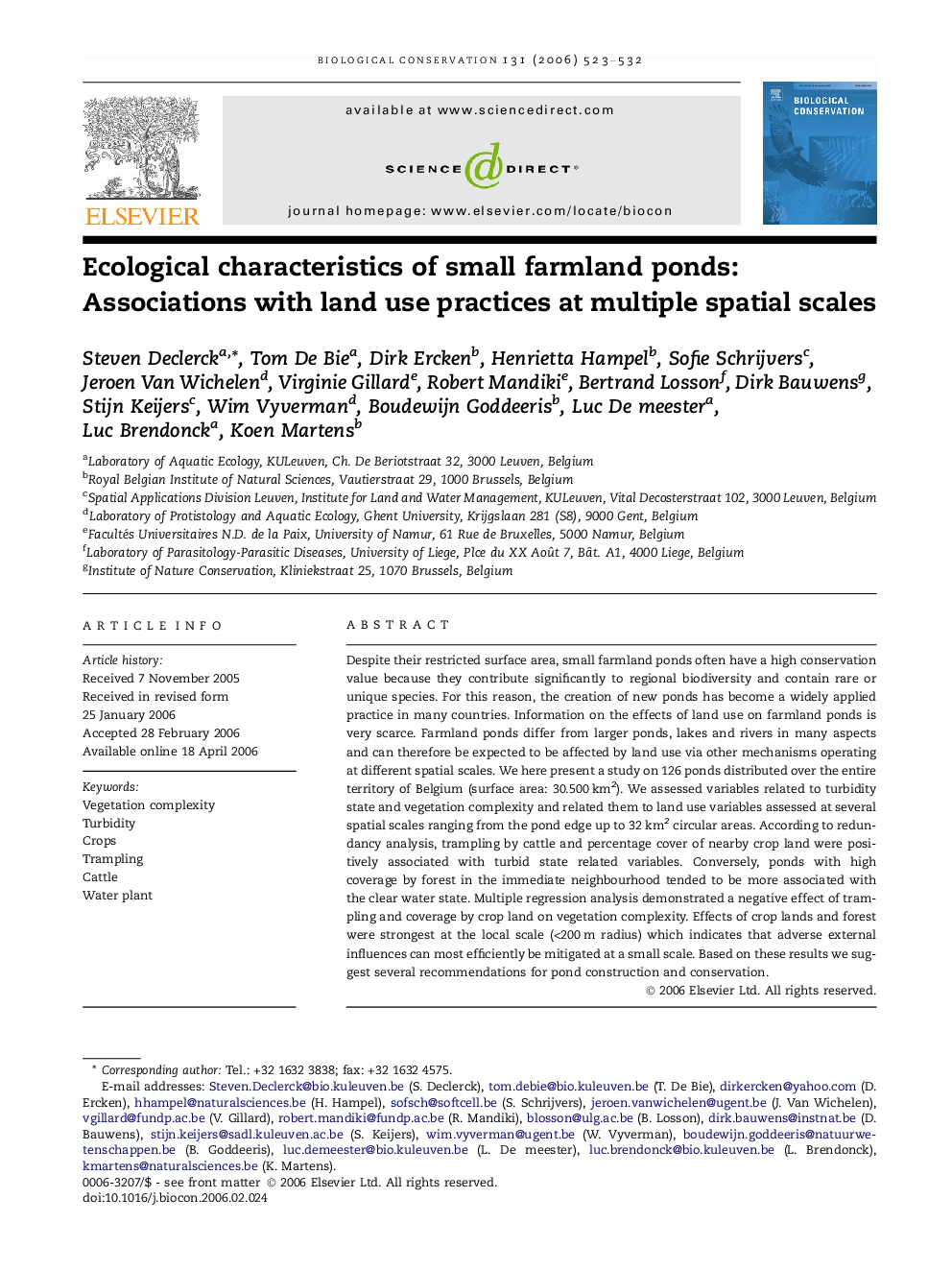| Article ID | Journal | Published Year | Pages | File Type |
|---|---|---|---|---|
| 4387513 | Biological Conservation | 2006 | 10 Pages |
Despite their restricted surface area, small farmland ponds often have a high conservation value because they contribute significantly to regional biodiversity and contain rare or unique species. For this reason, the creation of new ponds has become a widely applied practice in many countries. Information on the effects of land use on farmland ponds is very scarce. Farmland ponds differ from larger ponds, lakes and rivers in many aspects and can therefore be expected to be affected by land use via other mechanisms operating at different spatial scales. We here present a study on 126 ponds distributed over the entire territory of Belgium (surface area: 30.500 km2). We assessed variables related to turbidity state and vegetation complexity and related them to land use variables assessed at several spatial scales ranging from the pond edge up to 32 km2 circular areas. According to redundancy analysis, trampling by cattle and percentage cover of nearby crop land were positively associated with turbid state related variables. Conversely, ponds with high coverage by forest in the immediate neighbourhood tended to be more associated with the clear water state. Multiple regression analysis demonstrated a negative effect of trampling and coverage by crop land on vegetation complexity. Effects of crop lands and forest were strongest at the local scale (<200 m radius) which indicates that adverse external influences can most efficiently be mitigated at a small scale. Based on these results we suggest several recommendations for pond construction and conservation.
